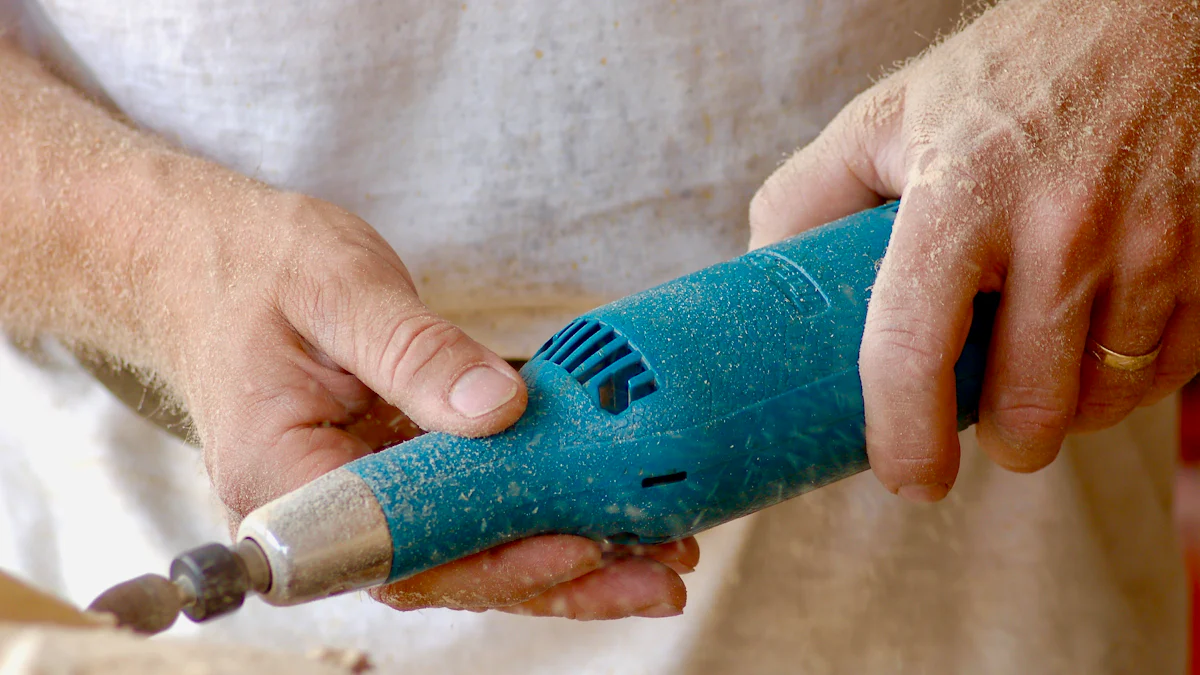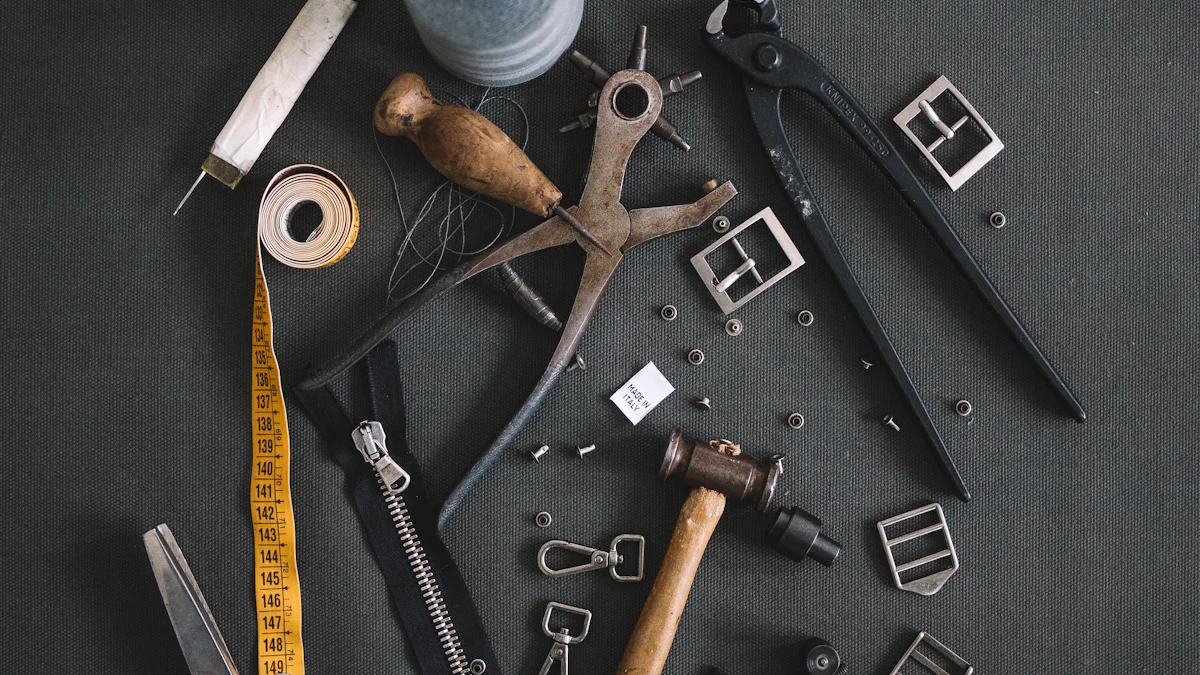
Precision cutting plays a crucial role in various projects, from crafting to home improvement. The Dremel tool stands out for its versatility and compact design, making it an essential tool for many tasks. Proper technique and the right tools are vital for achieving accurate results when cutting with a Dremel tool. Mastering these aspects ensures clean, precise cuts that elevate the quality of any project.
Selecting the Right Accessory

Understanding Different Dremel Attachments
Choosing the right attachment is crucial for cutting with a Dremel tool. Dremel offers a variety of attachments designed for different tasks.
Cutting Wheels
Cutting wheels are ideal for slicing through materials like metal, plastic, and wood. These wheels come in various thicknesses and diameters, allowing for precise cuts. The Dremel 15/16 in. Rotary Tool Thick Heavy-Duty Cut-Off Wheels are perfect for heavy-duty cutting tasks.
Cutting Bits
Cutting bits are versatile and can handle intricate cuts. The Dremel 561 Multi-Purpose Cutting Bit excels in free-hand cutting of soft materials such as wood and drywall. For more detailed work, the Dremel 115 Cutting & Carving Bit is excellent for grooving, slotting, and inlaying.
Specialty Attachments
Specialty attachments expand the capabilities of your Dremel tool. The Dremel Multipurpose Cutting Kit (565) allows for controlled cuts in materials like laminate and fiberglass. The Dremel #565 Cutting Guide ensures consistent and accurate cuts, making it a valuable addition to your toolkit.
Choosing the Right Accessory for Your Material
Selecting the appropriate accessory based on the material ensures optimal performance and precision.
Wood
For cutting wood, the Dremel 561 Multi-Purpose Cutting Bit and the Dremel straight and circle cutting attachment are excellent choices. These tools provide clean and accurate cuts, essential for woodworking projects.
Metal
Metal requires durable and strong accessories. The Dremel 15/16 in. Rotary Tool Thick Heavy-Duty Cut-Off Wheels are ideal for cutting through metals. These wheels offer precision and durability, making them suitable for various metalworking tasks.
Plastic
Plastic can be tricky to cut due to its tendency to melt. The Dremel 115 Cutting & Carving Bit works well for detailed cuts in plastic. For larger cuts, the Dremel Multipurpose Cutting Kit (565) provides control and accuracy.
Preparing for Precision Cutting
Setting Up Your Workspace
Ensuring Proper Lighting
Proper lighting plays a crucial role in cutting with a Dremel tool. Bright and focused light helps in seeing the cutting line clearly. A well-lit workspace reduces errors and enhances precision. Consider using adjustable desk lamps or overhead lights. LED lights provide bright and consistent illumination.
Securing Your Material
Securing the material ensures stability during cutting with a Dremel tool. Use clamps or vices to hold the material firmly. A stable material prevents slipping and ensures straight cuts. Always check the grip before starting the cut. A secure setup minimizes vibrations and enhances control.
Safety Precautions
Wearing Protective Gear
Safety gear is essential when cutting with a Dremel tool. Wear safety goggles to protect eyes from debris. Use gloves to safeguard hands from sharp edges. A dust mask prevents inhalation of fine particles. Ear protection reduces noise exposure. Always prioritize personal safety.
Checking Tool Condition
A well-maintained tool ensures safe and efficient cutting with a Dremel tool. Inspect the tool for any damage or wear. Check the attachments for proper fit and condition. Ensure the power cord is intact and free from cuts. Regular maintenance extends the tool’s lifespan and ensures optimal performance.
Techniques for Precision Cutting
Marking Your Cut
Using a Ruler and Pencil
Accurate marking ensures precise cutting with a Dremel tool. Use a ruler to measure the desired length. Mark the cutting line with a pencil. Ensure that the line is straight and clear. This step helps in guiding the tool along the correct path.
Applying Masking Tape
Masking tape can aid in achieving clean cuts. Apply masking tape along the marked line. The tape prevents splintering and chipping. It also provides a visual guide for cutting with a Dremel tool. Remove the tape after completing the cut to reveal a smooth edge.
Controlling the Dremel Tool
Maintaining a Steady Hand
A steady hand is crucial for precision. Hold the Dremel tool firmly but not too tightly. Use both hands for better control. Keep your movements slow and deliberate. Avoid sudden jerks or excessive pressure. This technique reduces mistakes and enhances accuracy.
“Steady Hand and Controlled Movements: Hold the Dremel tool with a steady hand and use controlled, deliberate movements. Avoid sudden jerks or excessive pressure, which can lead to mistakes.”
Adjusting Speed Settings
Different materials require different speeds. Adjust the speed settings on the Dremel tool accordingly. Higher speeds work well for harder materials like metal. Lower speeds suit softer materials like wood and plastic. Proper speed adjustment ensures smooth cutting with a Dremel tool.
Making the Cut
Starting Slowly
Begin the cut at a slow pace. Gradually increase the speed as you gain control. This approach prevents the tool from slipping. It also allows for better alignment with the marked line. Slow starts contribute to more accurate cutting with a Dremel tool.
Following the Marked Line
Follow the marked line carefully. Keep the tool aligned with the pencil mark or masking tape. Maintain a consistent speed and pressure. This method ensures that the cut remains straight and precise. Consistent practice improves skill and confidence in cutting with a Dremel tool.
Post-Cutting Tips
Evaluating Your Cut
Checking for Accuracy
After completing the cut, inspect the work closely. Use a ruler or measuring tape to verify the dimensions. Ensure that the cut aligns with the initial markings. Look for any deviations or irregularities along the edge. Accurate cuts enhance the overall quality of the project.
Making Necessary Adjustments
If the cut does not meet the desired accuracy, make adjustments. Use the Dremel tool to trim or refine the edges. Maintain a steady hand and follow the original guidelines. Small corrections can significantly improve the final result. Consistent practice will help in achieving better precision over time.
Finishing Touches
Smoothing Edges
Rough edges can detract from the appearance of the project. Use a sanding attachment on the Dremel tool to smooth the edges. Apply gentle pressure and move the tool along the edge. This process removes any burrs or splinters. Smooth edges provide a professional finish to the work.
Cleaning Up
A clean workspace contributes to better results. Remove any debris or dust generated during the cutting process. Use a brush or vacuum to clean the area. Proper cleanup ensures a safe and organized workspace. A tidy environment also makes it easier to spot any remaining imperfections in the cut.
Precision and proper technique play a crucial role in achieving high-quality cuts with a Dremel tool. Mastery of these skills comes with practice and experience. Regular use of the Dremel tool helps improve accuracy and control. The versatility of the Dremel tool makes it an invaluable asset for various projects. Users can explore different attachments and techniques to enhance their cutting capabilities. Consistent practice and refinement of skills lead to better results and greater confidence in using the Dremel tool.
See Also
Discovering the Range of Socks for Males and Females
